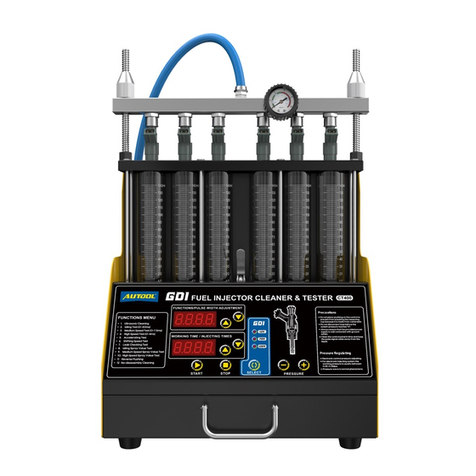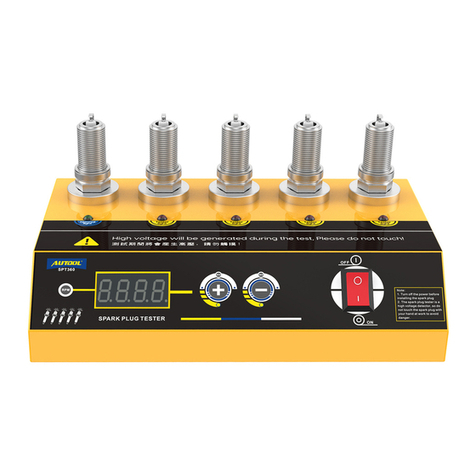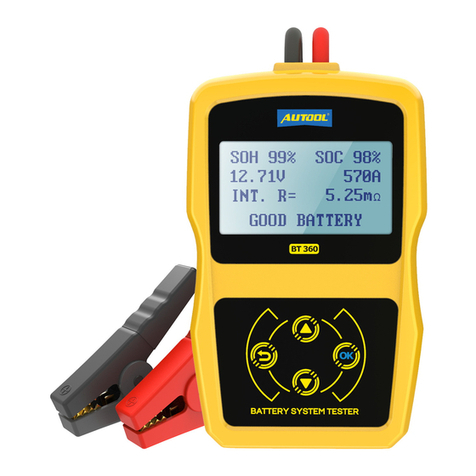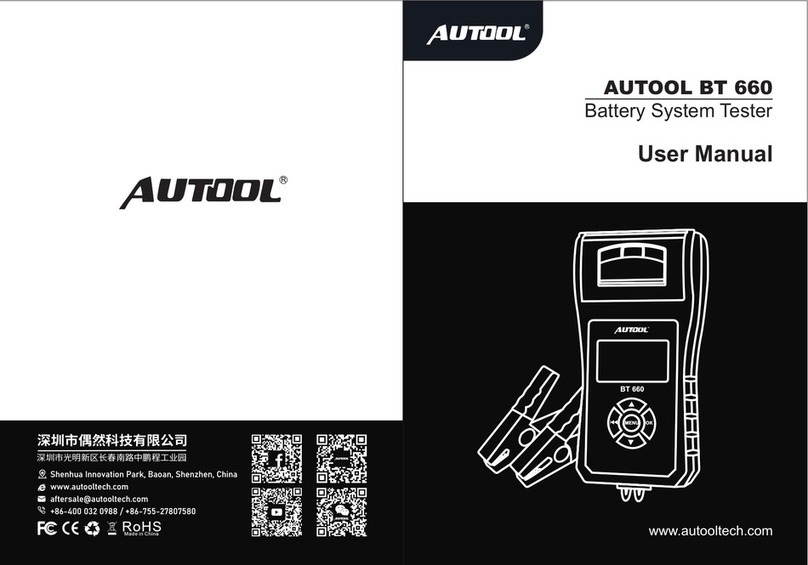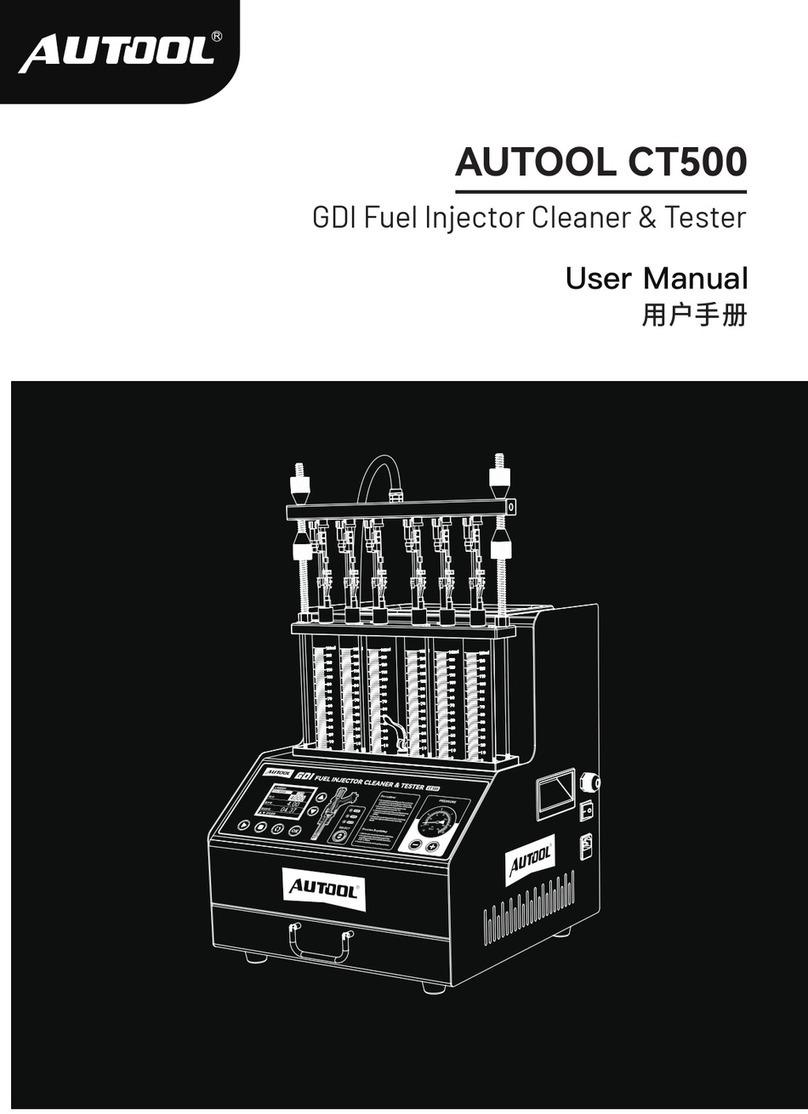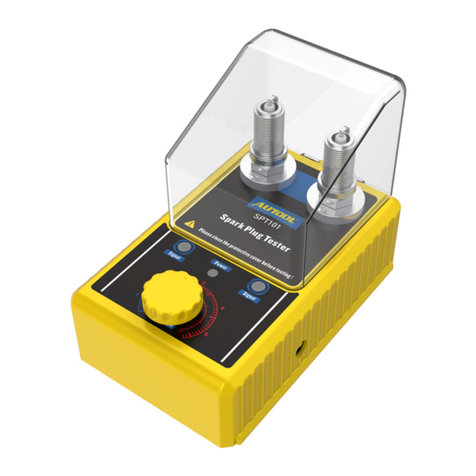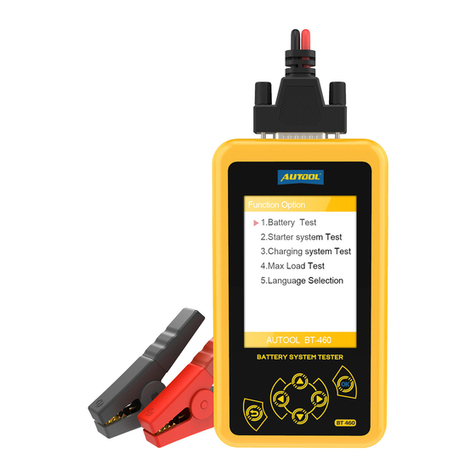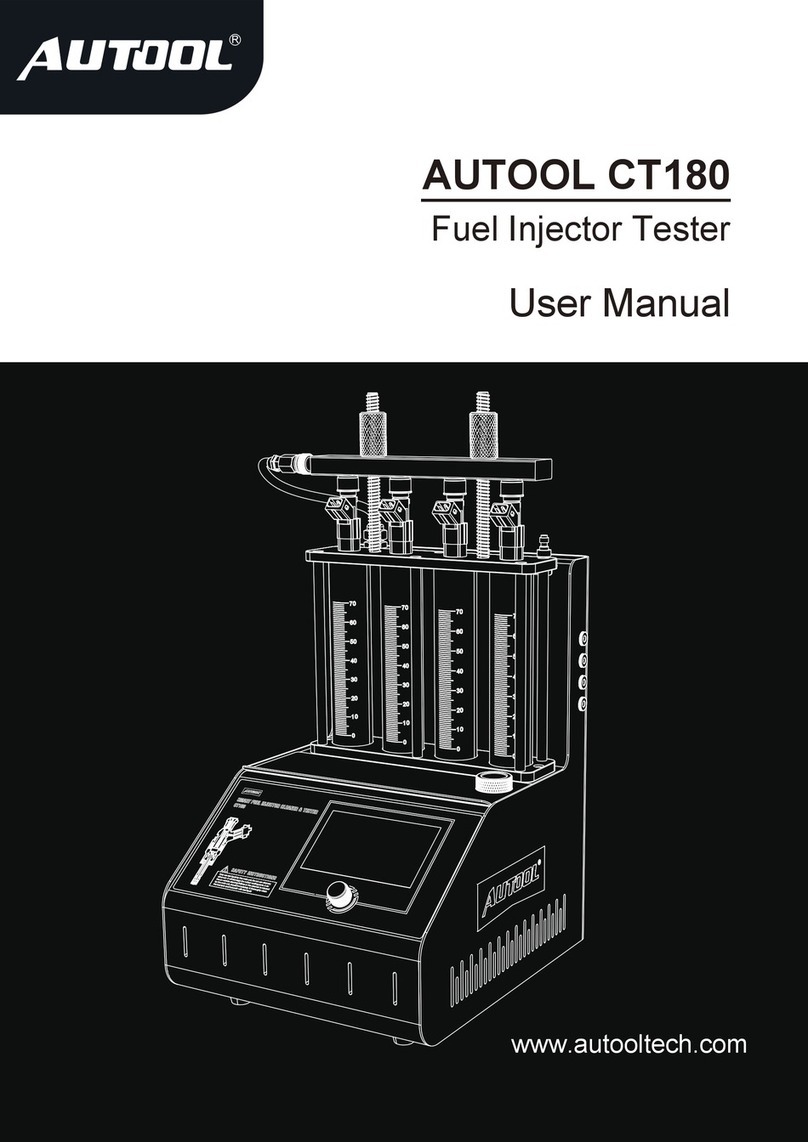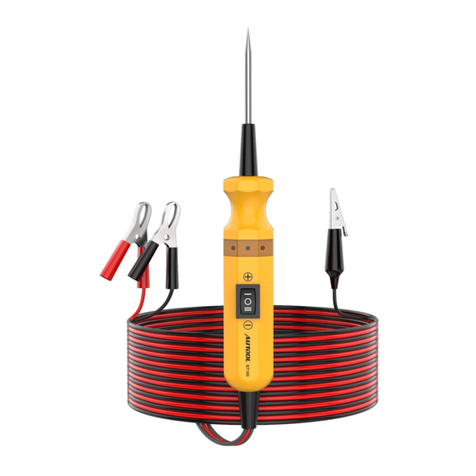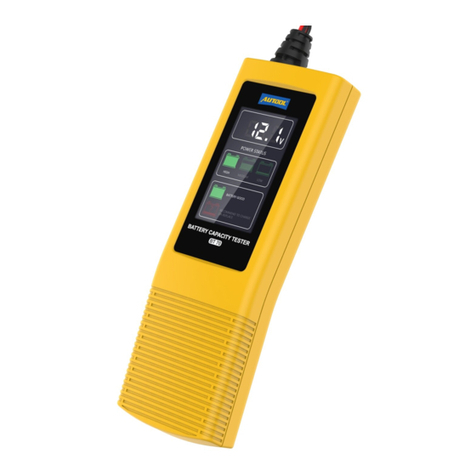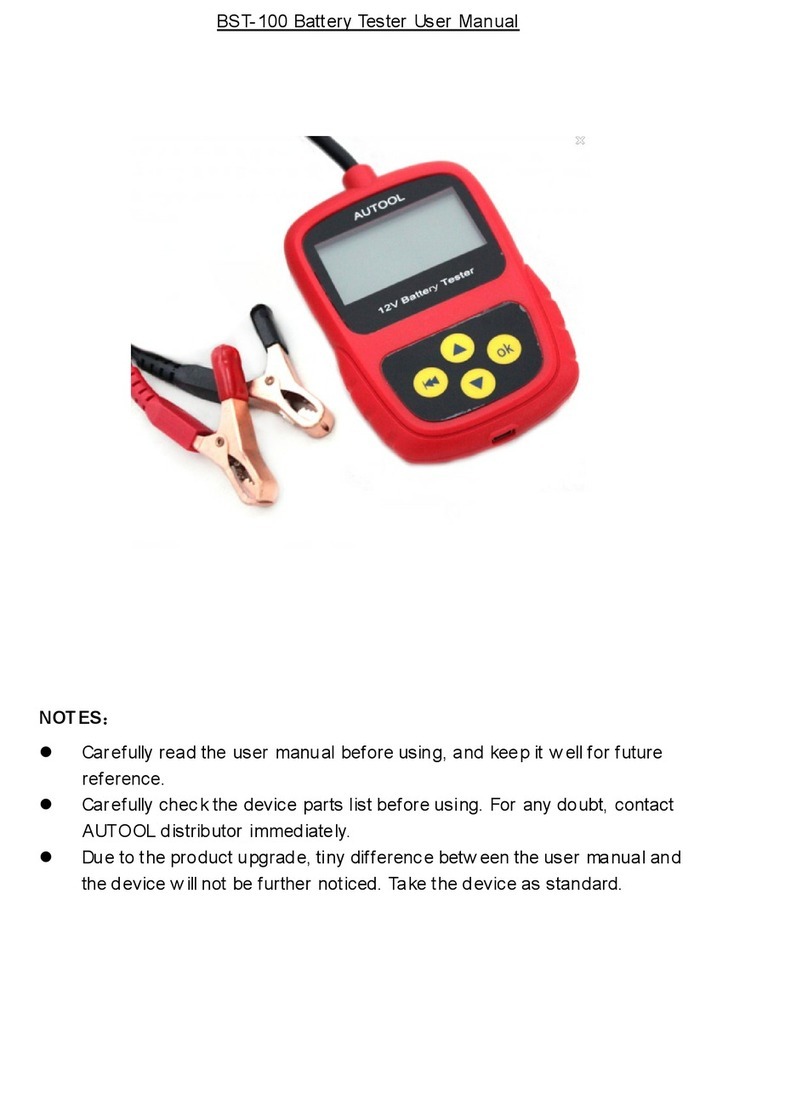
Set the tool in AC Voltage mode, using the probe tip with
chassis ground or the auxiliary ground lead.
Connect vacuum pump to MAP sensor.
Contact the probe tip to the MAP sensor positive
terminal and observe the LCD readings which should be
a sine wave in normal condition.
Apply vacuum.
Release vacuum and observe the LCD readings.
If the LCD readings are abnormal, there is a problem with
this sensor.
•
•
•
•
•
While the tool is in DC Voltage mode, by
using the probe tip in connection with the
auxiliary ground lead, components can be
activated right in your hand, thereby testing
their functions.
Connect the auxiliary ground lead to the
negative terminal or ground side of the
component being tested. Then contact the
probe tip to the positive terminal of the
component, the green LED should light,
indicating continuity through the component.
Activating Components in Your Hand
While keeping an eye on the green LED, quickly press and release the power switch forward.
If the green LED went out and the red LED came on, you may proceed with further activation.
Rock the power switch forward and hold it down to provide power to your component. With
the power switch rocked forward, power will flow from the positive lead on the battery into the
probe tip, through the tip into the component ’ s positive terminal, into the component and out
of the component, through the auxiliary ground lead and back into the tool, and back to the
vehicle battery ’ s ground.
If the green LED went off at that instant or if the circuit breaker tripped, the tool has been
overloaded. This could happen for the following reasons:
The contact you are probing is a direct ground or negative voltage.
The component you are testing is short-circuited.
The component is a very high current component (i.e., starter motor).
If the circuit breaker is tripped, reset it by waiting for it to cool down (15 sec.) and then
depressing the reset button.
•
•
•
While the tool in DC Voltage mode, clip the
auxiliary ground lead to the trailer ground,
probe the contacts at the jack and then apply
voltage to the probe tip. This lets you check
the function and orientation of the connector
and trailer lights.
If the circuit breaker tripped, that contact is
likely a ground. Reset the circuit breaker by
letting it cool down for 15 seconds and
depressing the reset button until it clicks into
Place.
Testing Trailer Lights and Connections
7 8
If the circuit breaker is tripped, reset it by
waiting for it to cool down (15 sec.) and then
depressing the reset button.
WARNING: Haphazardly applying voltage to
certain circuits can cause damage to a
vehicle’s electronic components. Therefore, it
is strongly advised to use the vehicle
manufacturer’s schematic and diagnosing
procedure while testing.
Activating Components in The Vehicle
While the tool in DC Voltage mode, contact the probe tip to the positive terminal of the
component, the green LED should light, indicating continuity to ground. While observing the
green LED, quickly depress and release the power switch forward. If the green LED went out
and the red LED came on, you may proceed with further activation.
If the green LED went off at that instant or if the circuit breaker tripped, the tool has been
overloaded. This could happen for the following reasons:
The contact you are probing is a direct ground.
The component you are testing is short-circuited.
The component is a very high current component(i.e., starter motor).
•
•
•
NOTE : When powering up components, you can increase the life of power switch if you first
press the switch, then contact the tip to the component. The arcing will take place at the tip
instead of the contacts of the switch.






